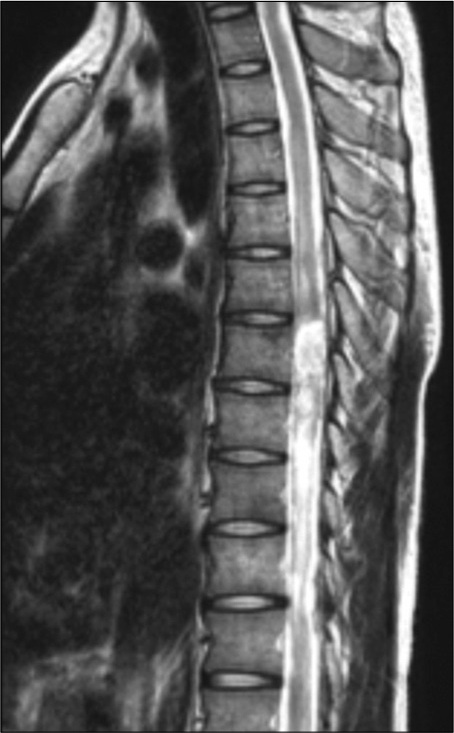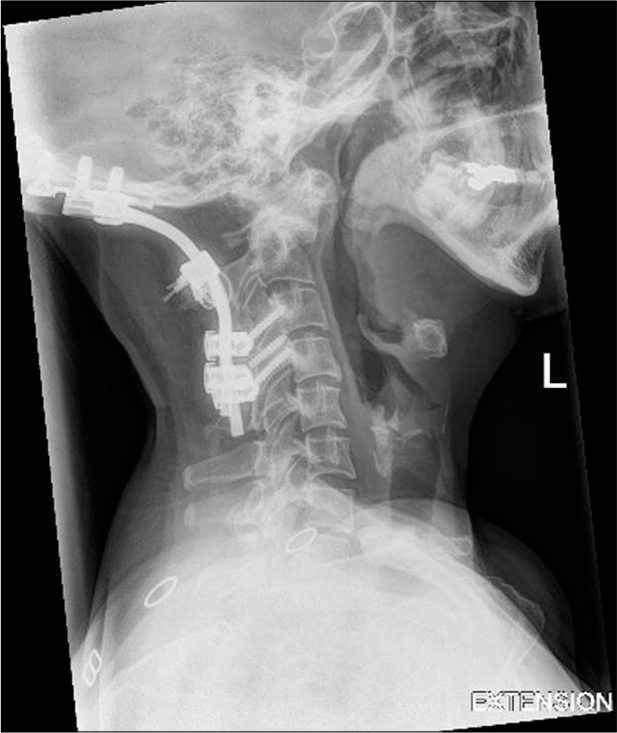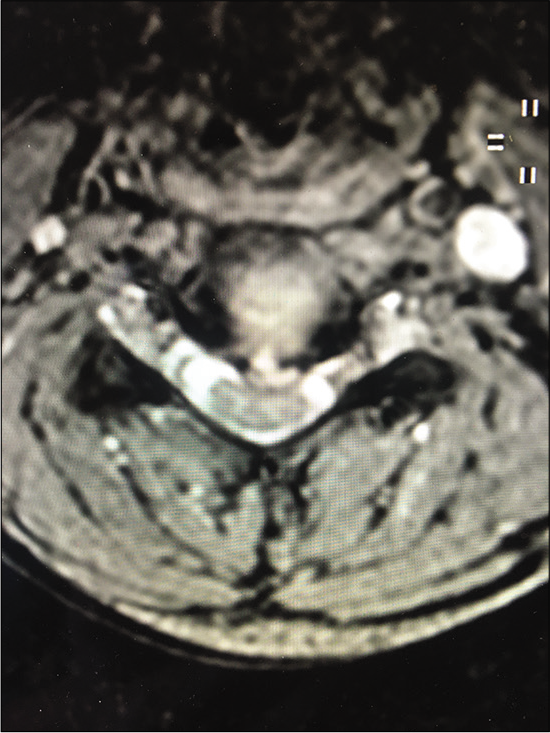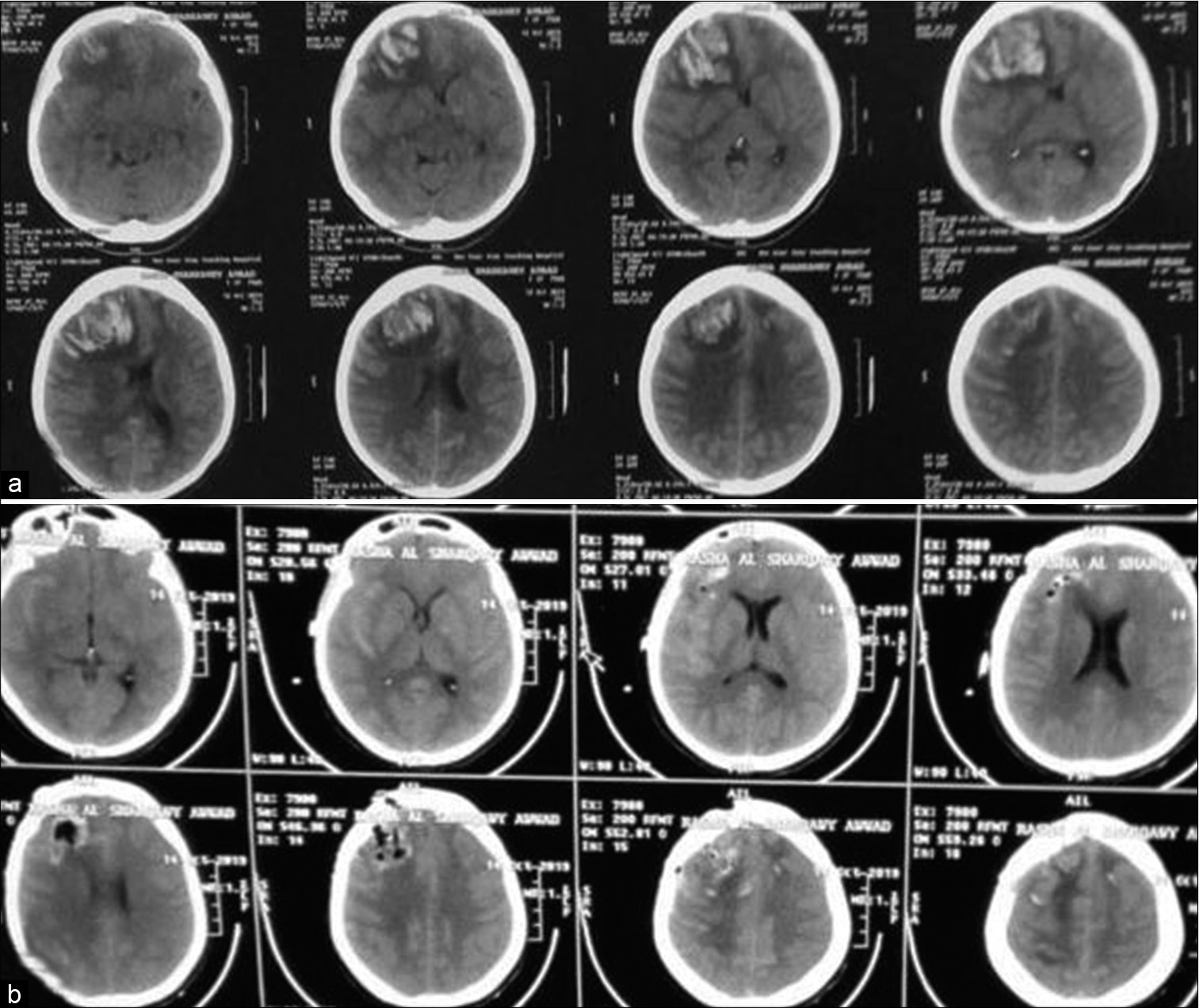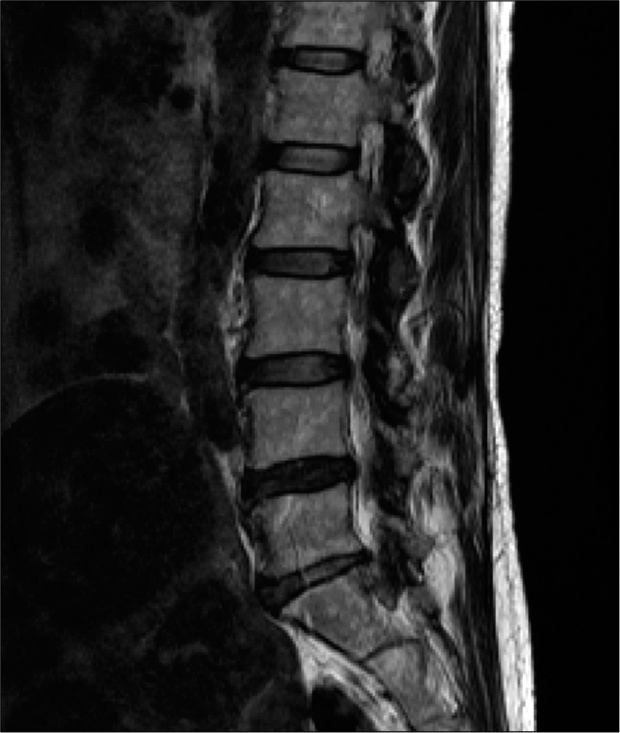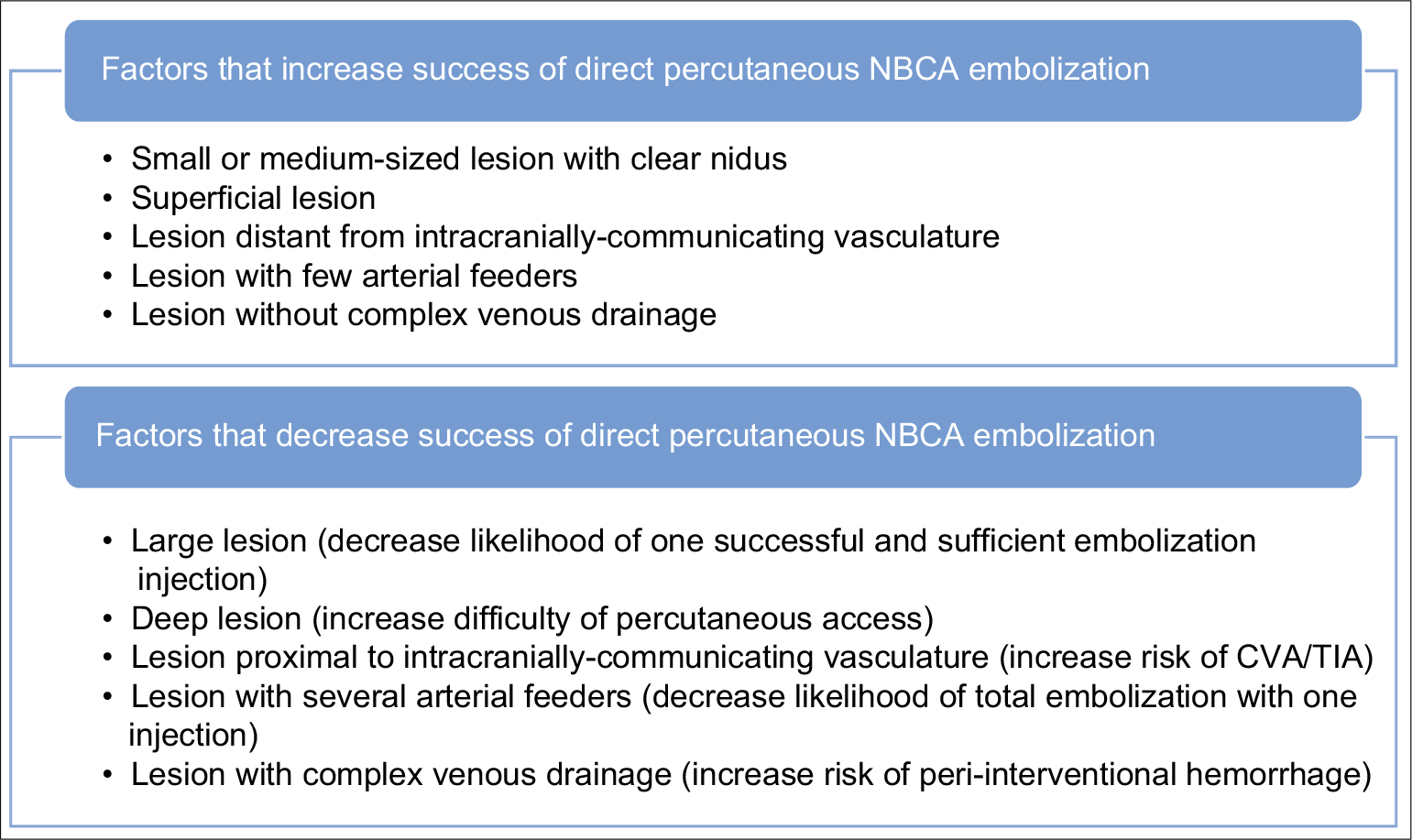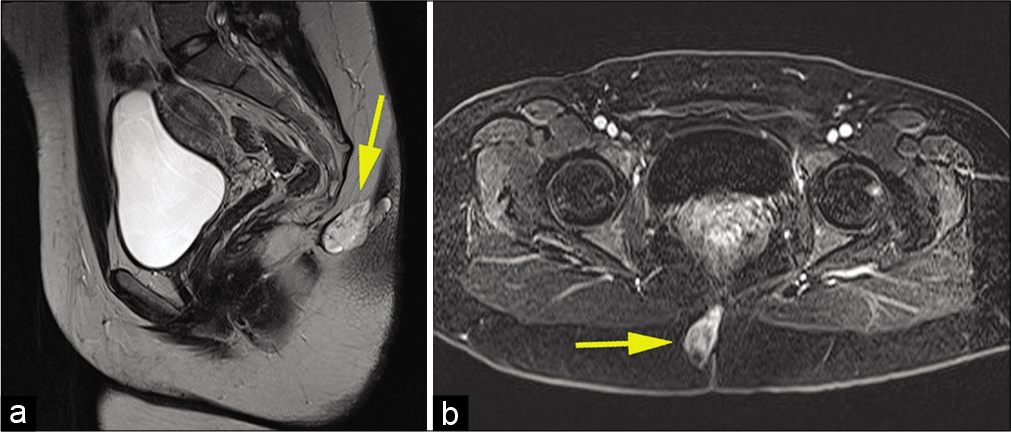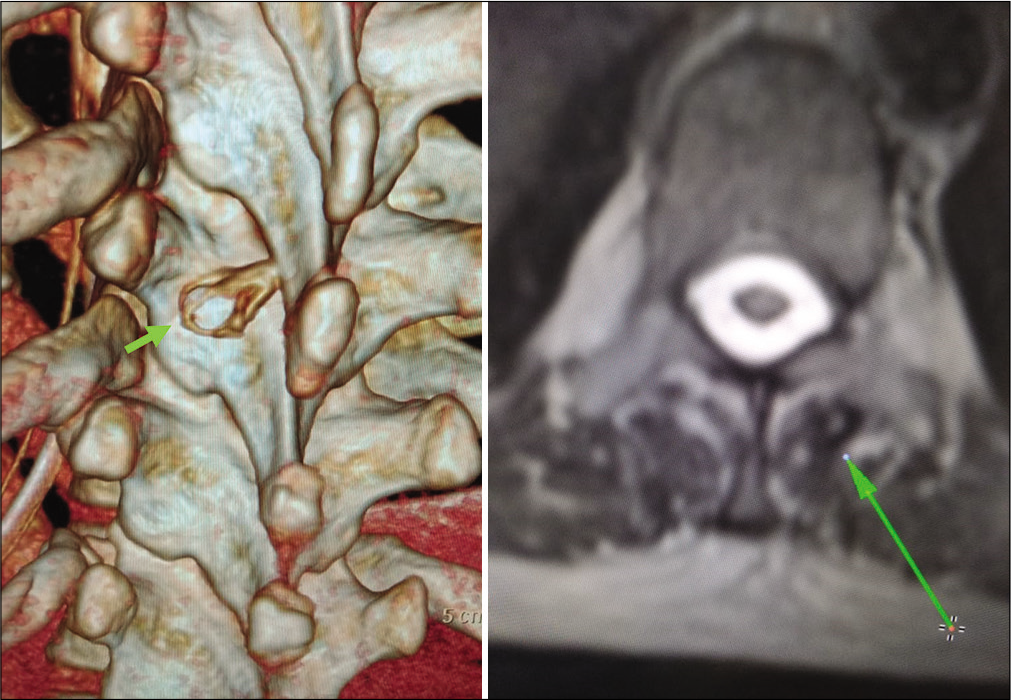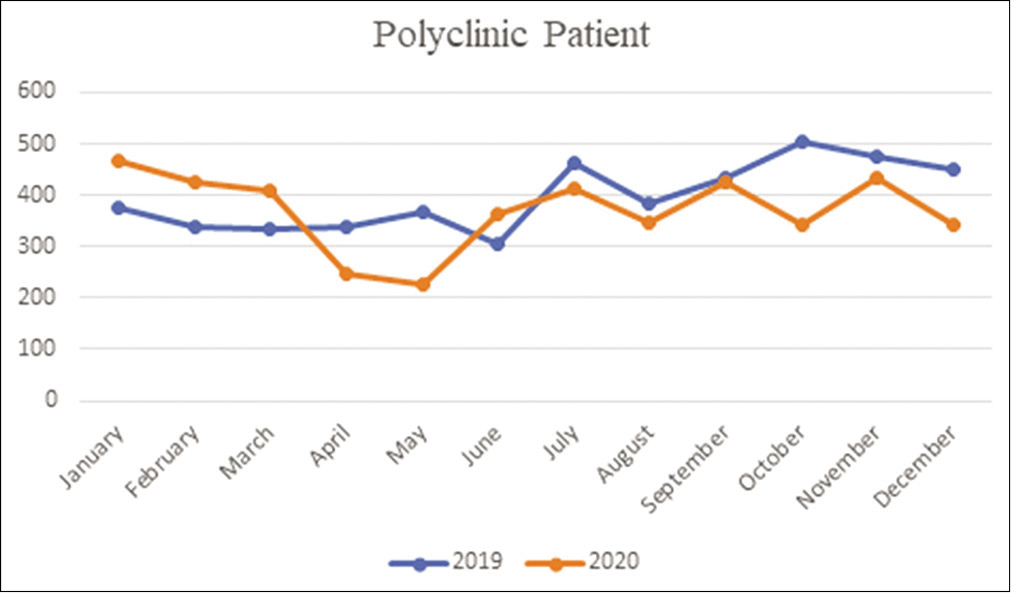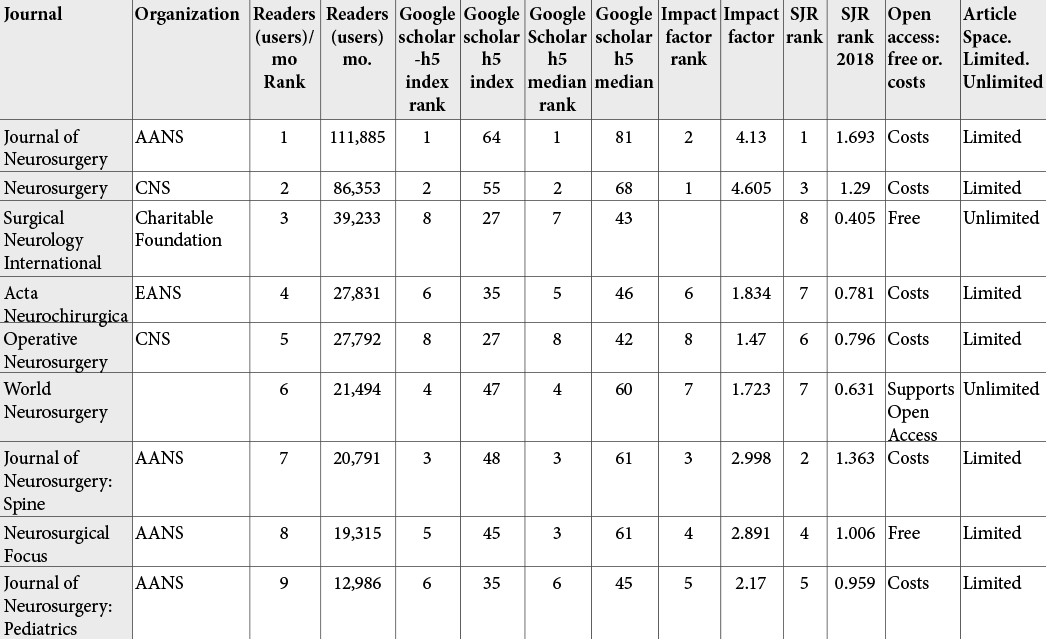Intradural extramedullary tuberculoma of the thoracic spine – A rare case report of paraparesis
Date of publication: 08-Apr-2021
Background: Intradural extramedullary tuberculoma of the spinal cord (IETSC) is an extremely rare form of spinal tuberculosis (TB) that is believed to be due to a host’s immune reaction against the Mycobacterium protein derivatives.
Considerations in revising occipitocervical fixation for dysphagia
Date of publication: 30-Mar-2021
Background: Dysphagia after occipitocervical fixation (OCF) is a complex phenomenon and revision surgery in this context involves difficult decision-making. The pathogenesis is explored and surgical strategies discussed. A surgical strategy that has not been described before in the management of this condition, is discussed with two illustrative cases.
Case of the week: Updating a cervical MR scan avoided unnecessary cervical surgery
Date of publication: 30-Mar-2021
Background: As spinal surgeons, we have all likely seen cases in which lumbar disc herniations regressed/resolved on successive MR studies. Here, we present a patient whose original cervical MR showed a large C4-C5 cervical disc herniation that completely resolved on the follow-up MR obtained 9 months later, thus avoiding cervical surgery.
Surgical management of cerebral venous sinus thrombosis: Case series and literature review
Date of publication: 30-Mar-2021
Background: Cerebral venous sinus thrombosis (CVST) is not a common type of stroke (5%) but still hazardous to be misdiagnosed or mistreated. Aggressive medical treatment is usually failed to hinder increase intracranial tension. Therefore, decompressive craniectomy (DC) is the final measure to mitigate the deleterious effect of supratentorial herniation. The purpose of the study is to illustrate our experience with the surgical treatment of CVST and reviewing the previous works of literature.
Middle cluneal nerve entrapment neuropathy attributable to lumbar disc herniation
Date of publication: 30-Mar-2021
Background: Middle cluneal nerve entrapment neuropathy (MCN-EN) is a known cause of low back pain (LBP). Here, we succeeded in treating a patient with a lumbar disc herniation who actually had MCN-EN with a nerve block and neurolysis.
Direct N-butyl-2-cyanoacrylate injections to the head and neck for percutaneous embolized devascularization
Date of publication: 30-Mar-2021
Background: N-butyl-2-cyanoacrylate (NBCA) has been used for vascular malformations since the 1980s; however, few studies have looked at applications, procedural techniques, and outcome throughout many institutions. Herein, we review applications, procedural techniques, previous literature, and outcomes for the use of NBCA specifically through percutaneous technique in treating head and neck vascular pathology.
Surgical management of a rare myxopapillary ependymoma of the gluteal region: A case report
Date of publication: 30-Mar-2021
Background: Ependymomas are rare tumors originating from neuroepithelial cells lining the wall of the ventricles or central canal of the spinal cord. While these tumors mainly occur within the central nervous system (CNS), there are occasional reports in children and young adult patients with a primary tumor occurrence outside of the CNS. Ependymomas of the sacrococcygeal region have been infrequently described in the literature with no standard of care established. We present a case report and review of the literature regarding this rare entity.
Incidental unintentional breakage of epidural catheter in supralaminar area: A case report
Date of publication: 30-Mar-2021
Background: Among some of the known complications, breakage of epidural catheter, though is extremely rare, is a well-established entity. Visualization of retained catheter is difficult even with current radiological imaging techniques, and active surgical intervention might be necessary for removal of catheter fragment. We report such a case of breakage of an epidural catheter during its insertion which led to surgical intervention.
The impact of the pandemic on neurosurgical services: A study from a coronavirus disease 2019 referral hospital in Surakarta
Date of publication: 30-Mar-2021
Background: A decrease in hospital visits including neurosurgery cases during the coronavirus disease 2019 (COVID-19) pandemic has been reported by many countries. This study aims to reveal important data regarding the effect that the COVID-19 pandemic has on services, neurosurgical surgery, and inpatients before and during the COVID-19 pandemic.
Why are most of the neurosurgical papers not getting cited? With ideas to improve the situation
Date of publication: 30-Mar-2021


